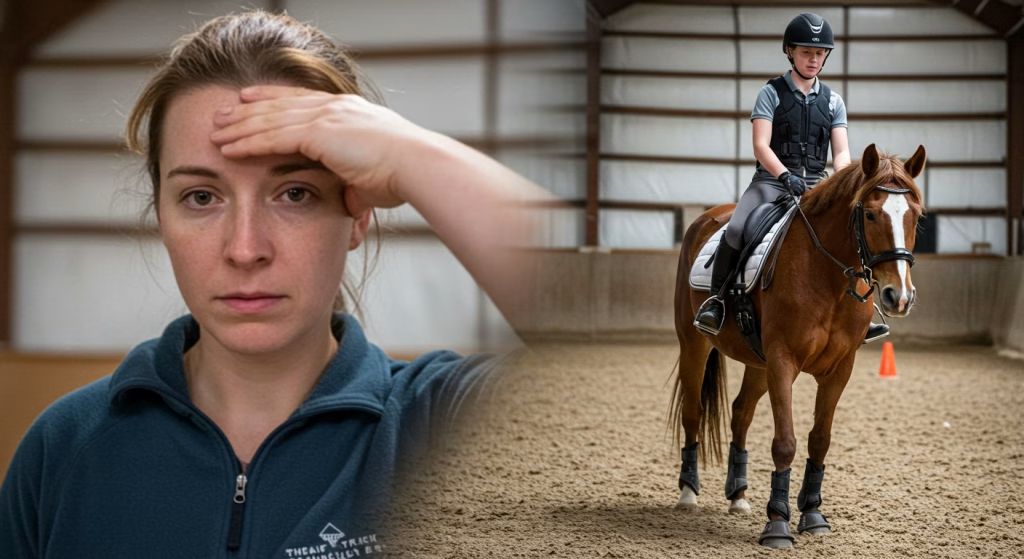Horses have long held a unique place in human history—carrying warriors into battle, pulling plows, and serving as loyal companions. But beyond their strength and grace, horses offer something deeply profound: the ability to heal. In recent decades, therapeutic riding—also known as equine-assisted therapy or adaptive riding—has emerged as a powerful tool in helping people improve both physical and mental health. From children with disabilities to veterans with PTSD, individuals around the world are discovering the remarkable benefits of working with horses.
Thank you for reading this post, don't forget to subscribe!This article explores the history, methods, benefits, and science behind therapeutic riding, showing how horses are changing lives—without ever saying a word.
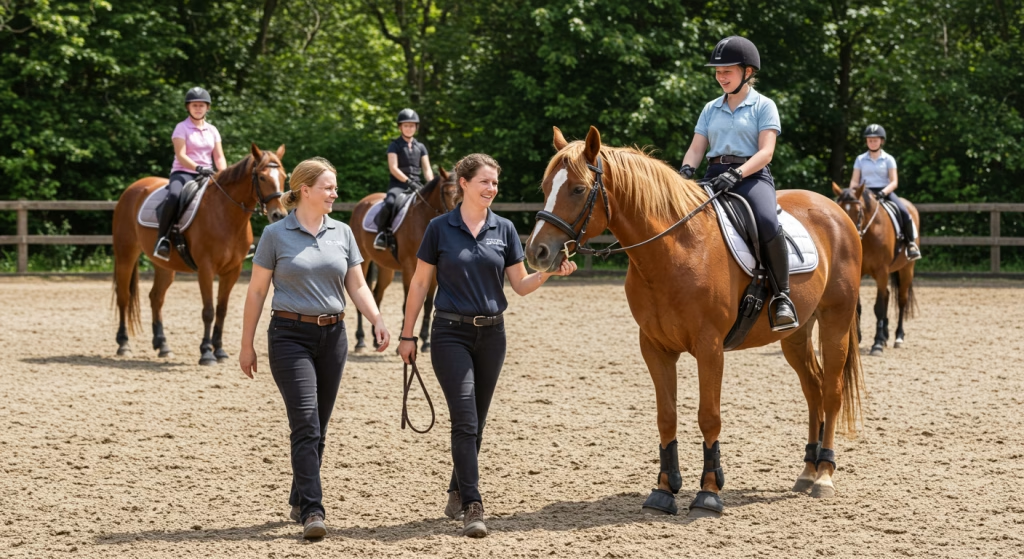
1. What is Therapeutic Riding?
Therapeutic riding is a form of horseback riding adapted for individuals with physical, cognitive, emotional, or developmental challenges. Unlike clinical physical therapy, therapeutic riding focuses on the recreational and instructional aspects of horsemanship, although it often yields medical and psychological benefits.
In these sessions, certified riding instructors work closely with individuals to teach riding skills while addressing specific goals—whether it’s improving balance, building confidence, or managing symptoms of anxiety. Often, volunteers assist by leading the horse or walking beside the rider for safety.
Therapeutic riding differs from hippotherapy, which is a clinical treatment conducted by licensed occupational, physical, or speech therapists using the horse’s movement as part of the therapy plan. While both are beneficial, therapeutic riding is more focused on empowerment, independence, and recreation.

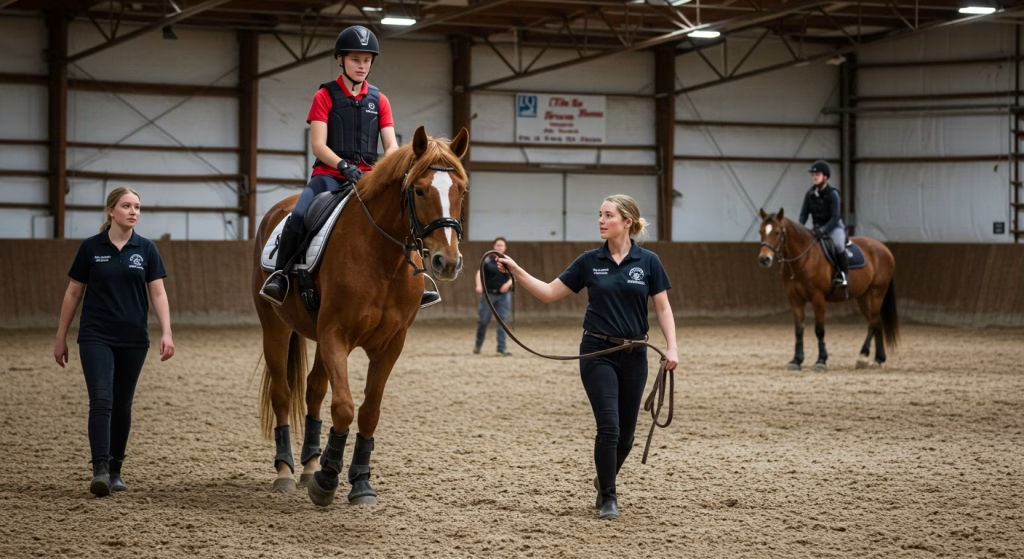
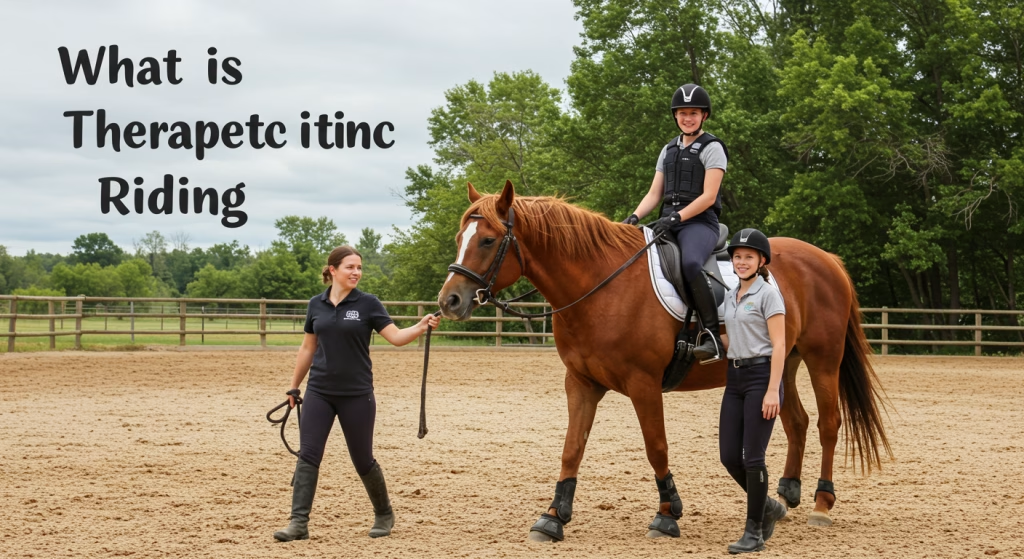
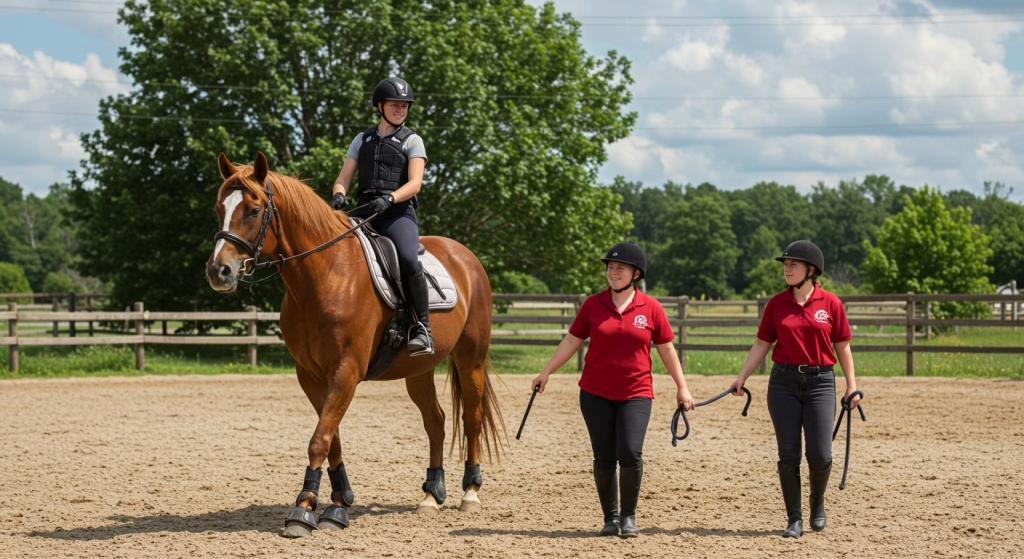
2. A Brief History of Equine Therapy
Though it may seem like a modern innovation, the healing power of horses has been recognized for centuries.
- In ancient Greece, Hippocrates, the father of medicine, spoke of horseback riding as a form of therapy.
- In the 17th century, European physicians prescribed horseback riding to improve balance, posture, and mental outlook.
- The modern era of therapeutic riding began after World War I and II, when horseback riding was used to help wounded soldiers recover.
- In 1969, the North American Riding for the Handicapped Association (now known as PATH Intl.) was formed to standardize therapeutic riding programs.
Today, thousands of centers around the world offer equine-assisted services to people of all ages and abilities.
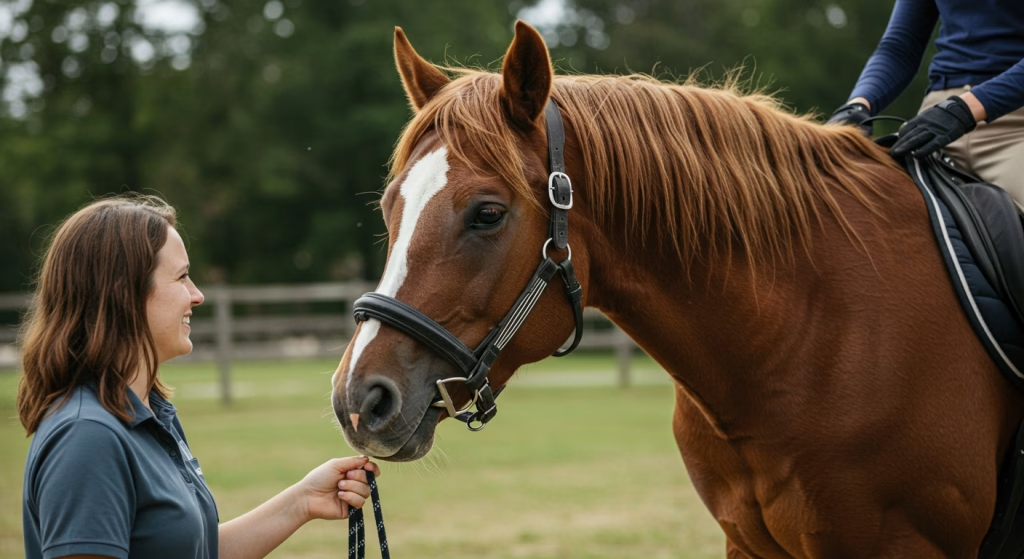
3. How Horses Heal: The Unique Qualities of Equines
Why horses? Why not dogs, cats, or other animals? Horses possess a unique set of traits that make them ideal therapeutic partners:
A. Rhythmic Movement
The horse’s gait closely mimics the movement of the human pelvis during walking. This three-dimensional motion helps riders improve:
- Core strength
- Balance
- Postural control
- Coordination
For individuals with cerebral palsy, spinal cord injuries, or developmental delays, the motion of riding stimulates muscles and nerves in ways that are difficult to replicate in a clinical setting.
B. Immediate Feedback
Horses are incredibly perceptive and respond instantly to human body language, tone of voice, and emotional state. This provides real-time feedback to riders, helping them adjust their behavior, posture, or focus. This natural biofeedback mechanism helps individuals learn emotional regulation, self-awareness, and confidence.
C. Non-Judgmental Nature
Unlike humans, horses don’t judge, diagnose, or criticize. For people dealing with trauma, anxiety, or low self-esteem, the acceptance offered by a horse can be deeply healing.
D. Mirroring and Empathy
Horses mirror human emotions and energy. If a person is anxious, the horse may become tense. If the person calms down, the horse often follows suit. This dynamic teaches emotional control and fosters empathy.
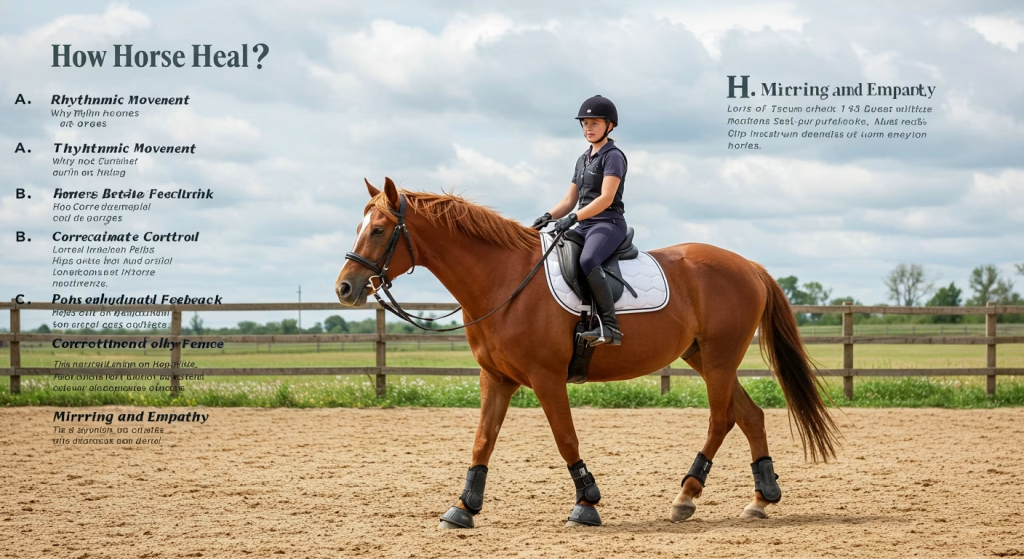

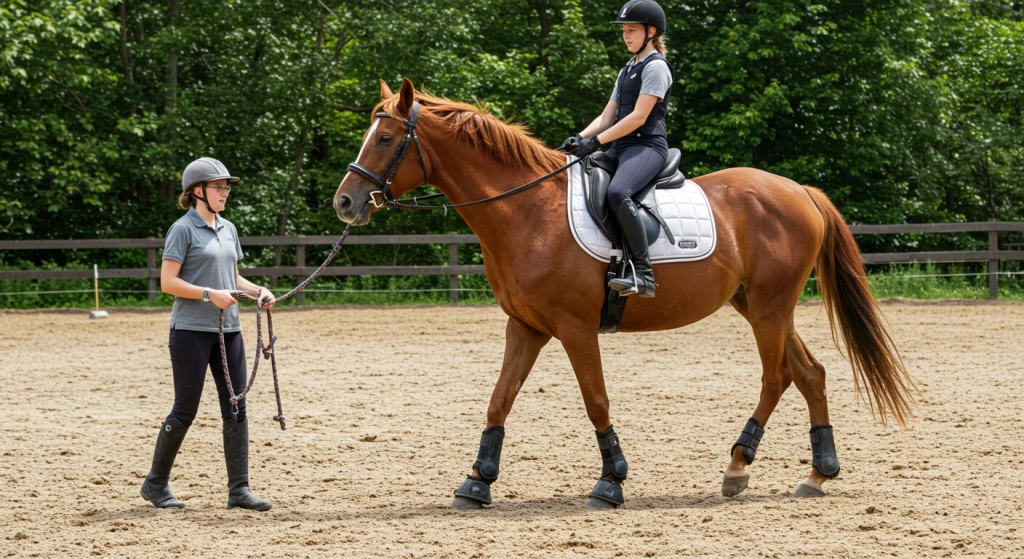
4. Who Can Benefit from Therapeutic Riding?
Therapeutic riding is inclusive and has shown benefits for a wide range of individuals, including but not limited to:
A. Physical Disabilities
- Cerebral palsy
- Muscular dystrophy
- Spina bifida
- Stroke recovery
- Multiple sclerosis
B. Developmental and Intellectual Disabilities
- Autism spectrum disorder (ASD)
- Down syndrome
- ADHD
- Learning disabilities
C. Emotional and Mental Health Challenges
- PTSD (especially among veterans)
- Depression
- Anxiety
- Trauma recovery
D. Sensory Processing Disorders
- Issues with touch, sound, and movement can be safely explored through interaction with horses and the riding environment.
Each participant’s goals are unique. For some, the aim is improved muscle tone and coordination. For others, it’s social skills, confidence, or simply joy and emotional connection.

5. Key Benefits of Therapeutic Riding
A. Physical Benefits
- Improved posture and alignment
- Strengthening of core and leg muscles
- Enhanced balance and coordination
- Better motor skills and body awareness
- Increased joint mobility and flexibility
The horse’s movement is especially beneficial for individuals who use wheelchairs, as it offers a form of movement they otherwise wouldn’t experience.
B. Cognitive Benefits
- Increased focus and attention span
- Development of sequencing and memory skills
- Improved spatial awareness
- Better problem-solving skills
- Language development through riding commands and interaction
C. Emotional and Psychological Benefits
- Enhanced self-esteem and confidence
- Reduction in anxiety and depression symptoms
- Emotional regulation and impulse control
- Trust building through horse-human interactions
- A sense of accomplishment and pride
D. Social Benefits
- Encourages interaction with instructors, volunteers, and peers
- Promotes teamwork and communication
- Develops patience, responsibility, and empathy

6. What a Typical Therapeutic Riding Session Looks Like
Initial Assessment
Before beginning a therapeutic riding program, participants are typically evaluated by a certified instructor and may be referred by a medical professional. The assessment includes:
- Physical and cognitive ability
- Goals and expectations
- Medical history and mobility
The Session
A typical session may last 30 to 60 minutes and includes:
- Mounting and dismounting with assistance
- Warm-up activities and stretches
- Riding exercises (e.g., steering, stopping, trotting)
- Games or tasks (ring toss, obstacle course)
- Grooming and bonding time with the horse
Sessions are adapted based on each individual’s needs. Some programs also include groundwork, where the person leads or cares for the horse from the ground, which is beneficial for those who may not be able to ride.
Safety First
Therapeutic riding centers are regulated by organizations like PATH Intl. and employ trained instructors and volunteers. Helmets and adaptive equipment are used, and horse selection is based on temperament, training, and suitability for therapeutic work.

7. Scientific Evidence and Support
The growing popularity of equine therapy is supported by a growing body of research.
Key Findings:
- A 2015 study in the Journal of Autism and Developmental Disorders found that children with ASD who participated in therapeutic riding showed improvements in social cognition, communication, and irritability.
- A 2020 study on veterans found that equine-assisted therapy significantly reduced symptoms of PTSD, depression, and anxiety.
- Multiple studies have shown that therapeutic riding can improve gross motor skills, muscle tone, and coordination in children with physical disabilities.
While more large-scale research is needed, the evidence so far strongly supports the benefits of therapeutic riding.

8. Stories of Transformation
A. Emily, Age 10 – Autism Spectrum Disorder
Emily struggled with sensory overload and social isolation. After six months of weekly riding, her parents reported:
- Improved eye contact
- Better communication skills
- Increased confidence in school
B. Tom, Age 34 – Veteran with PTSD
Tom found it difficult to connect with people after returning from deployment. Through riding and caring for his therapy horse, he regained emotional regulation, reduced his medication use, and re-established relationships with his family.
C. Maya, Age 16 – Cerebral Palsy
Unable to walk independently, Maya found freedom in the saddle. Her posture improved significantly, and she began to walk short distances with a walker after a year of therapy.
These are just a few examples among thousands of lives changed by the healing presence of horses.


9. How to Get Involved
For Participants
- Search for local therapeutic riding centers certified by PATH Intl., CanTRA (Canada), or RDA (UK).
- Consult with your doctor or therapist to ensure it’s appropriate.
- Look into financial aid options—many centers offer scholarships or sliding-scale fees.
For Volunteers
- Therapeutic programs rely heavily on volunteers for horse leading, side-walking, grooming, and barn chores.
- No experience required—just a willingness to learn and help.
- It’s an incredibly rewarding way to give back.
For Donors and Advocates
- Support centers through donations or sponsorships.
- Advocate for equine therapy programs in your community or schools.
- Help fund research into equine-assisted services.


Conclusion
Therapeutic riding is more than just a form of recreation—it’s a bridge between disability and ability, between trauma and healing. With their steady rhythm, empathetic nature, and gentle strength, horses have become unlikely healers, helping people walk straighter, speak louder, and live more fully.
As science continues to validate what horse lovers have long known—that horses can heal the mind, body, and soul—therapeutic riding will only grow in importance. Whether you’re a parent seeking hope for a
